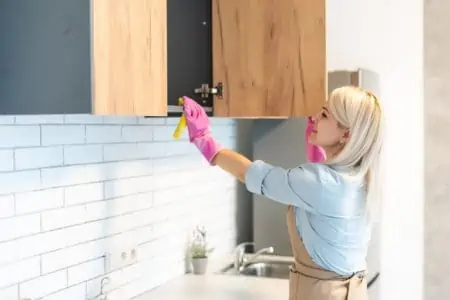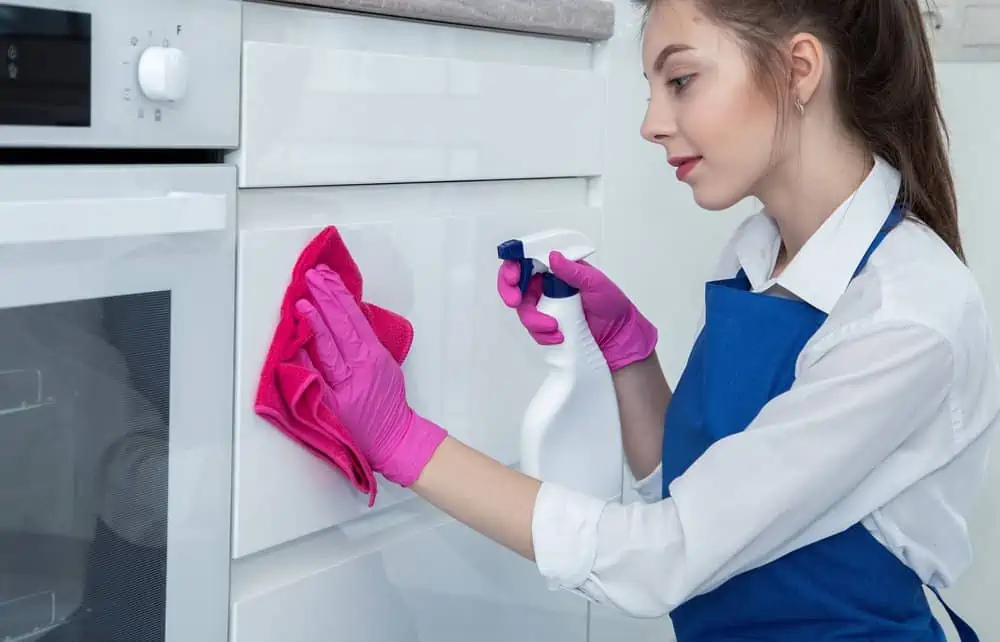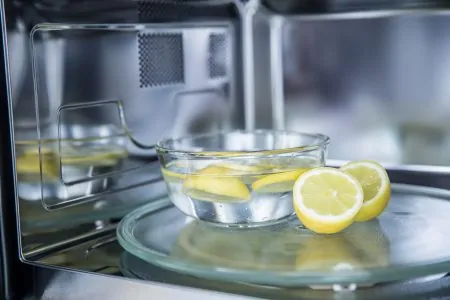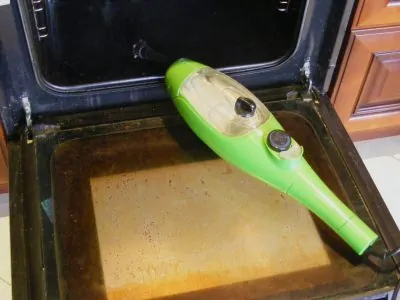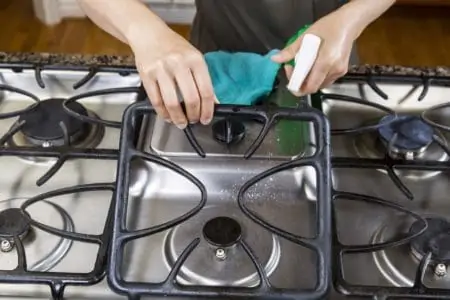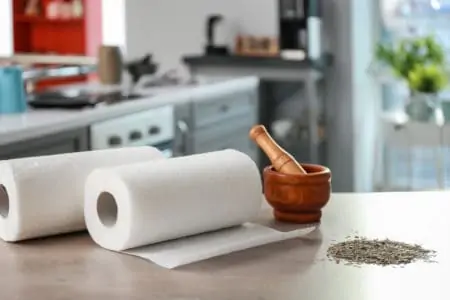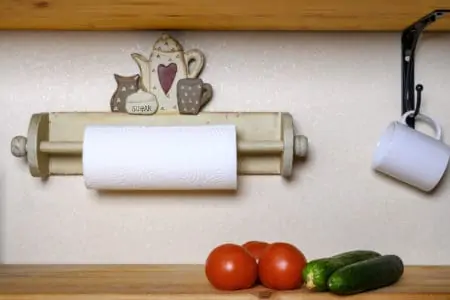Are your kitchen cabinets sticky with grease and grime? The grime makes your kitchen unappealing to spend any time cooking. You will need to clean your kitchen cabinets to make them shine.
So today, we’re chatting about the best way to clean kitchen cabinets. You’ll be able to enjoy cooking in your kitchen again.
Key Takeaways
- Clean kitchen cabinets using water, dish soap, and a microfiber cloth, then rinse and dry them.
- Weekly spot clean and disinfect hardware; deep clean cabinets 3-4 times a year.
- Use gentle cleaners like Murphy’s Oil Soap for wood cabinets, and vinegar or soapy water for laminate and glass cabinets.
- Prevent grime and stains by dusting cabinets every 2 weeks and cleaning spills immediately.
- How Often Should You Clean Your Cabinets?
- Best Cleaner for Painted Kitchen Cabinets
- How to Clean Kitchen Cabinets Without Removing the Finish
- What to Avoid When Cleaning Cabinets
- Cleaning Different Types of Cabinets
- How to Get Stains Out of Cabinets
- Tips For Keeping Kitchen Cabinets Clean
- FAQs
- Cleaning Kitchen Cabinets
How Often Should You Clean Your Cabinets?
Weekly: Spot clean your cabinets each week. Do this by spraying a microfiber cloth with a multi-purpose cleaner. Then wipe down the cabinets.
Make sure you also disinfect the hardware on your cabinets. A disinfectant wipe such as Clorox Disinfecting Wipes makes it extremely easy to disinfect them.
Seasonally: You will need to deep clean your kitchen cabinets 3 or 4 times a year. Cleaning all of your kitchen cabinets at one time is an intimidating task, so it’s best to tackle them one cabinet at a time.
First, remove all the items stored in the cabinet you will be cleaning.
Spray your microfiber cloth with your multi-purpose cleaner. Wipe the insides and outsides of your cabinet with the cloth making sure that you wipe down the shelves along with the inside and outside of the door. Scrub corners and crevices with an old toothbrush.
Finish by wiping your cabinets with a damp microfiber cloth. If it’s soaked, you’ll end up with your cabinets exposed to too much water which may damage them. Your goal is to remove all the residue from your cleaner so it doesn’t attract dirt necessitating that you clean your cabinets more frequently.
Best Cleaner for Painted Kitchen Cabinets
The best cleaner for painted kitchen cabinets naturally is to make soapy water using a dish soap such as Dawn Dish Soap and water. Mixing a 1:1 ratio of vinegar and hot water makes an excellent cleaner for removing grease from your painted kitchen cabinets.
Another option is to use a commercial cleaner such as Rejuvenate Cabinet & Furniture Cleaner.
How to Clean Kitchen Cabinets Without Removing the Finish
You can clean your kitchen cabinets without removing or damaging the finish. Use soapy water made by combining water with a squirt of dish soap to scrub your cabinets.
- Time: 2 hours
- Difficulty: Beginner
What You’ll Need
- Vacuum with attachment
- Microfiber cloths
- Old toothbrush
- Spray bottle
- Dish soap such as Dawn Dish Soap
- Vinegar
- Glass cleaner such as Windex (optional)
1. Empty the Cabinet
Empty all the items from each cabinet before you begin cleaning them. Make sure that you remove any torn or discolored shelf lining as well. Consider vacuuming the cabinets if you see lots of crumbs or dust in them.
2. Make Cleaning Solution
Most cabinets can be safely cleaned with Dawn or another type of dish soap and water. This will remove food, dust, and mild grease from the cabinets. You can use an all purpose cleaner, but you will need to test it first in an inconspicuous spot to make sure it won’t damage your cabinet’s finish.
To make the cleaner, put water in a spray bottle and then add a squirt of dish soap.
3. Wash Cabinets
While you can spray the cleaner on the cabinets directly, it’s best to spray your microfiber cloth and then wipe the cabinets with it. Start at the top of the cabinet and work down, remember to clean the edges and sides. You can use an old toothbrush to scrub corners and crevices.
4. Rinse and Dry Cabinets
Dampen a second microfiber cloth with water to remove any soapy residue that’s left on your cabinets. The soapy residue will attract dirt making it necessary to clean your cabinets more frequently. Dry the cabinets with a dry cloth to prevent the water from discoloring or damaging the cabinet.
5. Clean Glass or Mirrors
If you have a glass or a mirror on your cabinet, spray a glass cleaner onto a microfiber cloth. Do not spray the glass directly because the cleaner can seep into the woodwork of the cabinet and damage it. Wipe the glass with your microfiber cloth to clean it.
6. Clean Hardware
Fill a bowl with a 1:1 ratio of vinegar and water. Dip your old toothbrush into this solution. Scrub the handles, knobs, and pulls of your cabinets with the toothbrush.
The vinegar solution is safe to clean wood and crevices if you have ornate trim. Remember to rinse with a damp microfiber cloth before drying your hardware and trim.
7. Clean Contents
Go through the contents of your cabinets. Throw away any expired items and clean dirty cans and containers by spraying the dish soap cleaner on a damp cloth before wiping the containers clean with the cloth. Dry the items.
8. Dry Cabinets
Make sure the cabinets are dry by leaving the doors open for 1-2 hours. Once the cabinets are dry, replace the contents.
What to Avoid When Cleaning Cabinets
When you’re cleaning kitchen cabinets, you’ll want to avoid using bleach, ammonia, nail polish, and paint thinner. Also, avoid using hard or strong detergents and soaps.
These cleaners may damage the finish of your kitchen cabinets.
Cleaning Different Types of Cabinets
Not all cabinets are painted. Here are some instructions on how to clean kitchen cabinets that are laminate, wood, or glass.
How to Clean Wood Cabinets
Hardwood kitchen cabinets such as oak come with a variety of seals and finishes. While some will handle a more abrasive treatment than others, it’s best to use a gentle cleanser like Murphy’s Oil Soap. Here’s how to clean wood cabinets without removing the finish.
Dampen a cloth with a cleanser such as Murphy’s Oil Soap. Wipe your cabinets with the grain.
Now rinse your cabinets with a damp cloth to remove all the soapy residue. Don’t use too much water as the water will damage the wood. Use the third cloth to dry your cabinets. Rub the wood with the grain to buff and polish it.
How to Clean Glass Cabinets
You will need to use a glass cleaner to clean the glass on your cabinets. However, the glass cleaner may damage the wood or laminate on your cabinet doors. The trick is to spray the cleaner on your microfiber cloth and use the cloth to clean the glass.
Use vinegar or soapy water to clean any wood or laminate around the glass rather than an oil-based cleaner, because it will leave hard-to-remove residue and streaks on the glass.
How to Clean Laminate Cabinets
Laminate cabinets are durable, forgiving cabinets that are easy to care for. A weekly wipe down is usually enough to keep them looking beautiful.
Wipe your cabinets with diluted vinegar on a clean cloth. Rinse the cabinets with a damp cloth to make sure that the vinegar residue has been removed before drying the cabinets.
Do not use abrasive cleaners, pads, or sponges on the laminate cabinets. The abrasiveness will scratch and damage the surface.
How to Get Stains Out of Cabinets
Nothing is worse than seeing a thick, sticky, grease buildup on your cabinets. You can use an orange oil cleaner such as Touch of Oranges Wood Cleaner and Polish. Make sure to first test the cleaner in an inconspicuous spot before you begin to make sure it won’t damage your finish.
Spray the cleaner onto the grease stain and let it sit for 2-4 minutes to allow it to penetrate the grease. Then gently scrub the stain off of your cabinet. You may need to repeat the process.
You can also make a paste with baking soda and water. Spread the baking soda and water all over the sticky stain. Use a soft-bristled brush such as a toothbrush to remove the grease.
A Magic Eraser can also be used. Make sure to test it in a hidden area before using it as the abrasive surface may damage your cabinet’s finish.
Tips For Keeping Kitchen Cabinets Clean
There are some additional tips you can follow to prevent grime and stains from developing on your cabinets.
- Dust your cabinets every 2 weeks. This will reduce the need for deep cleanings.
- Clean spills immediately to prevent the stains from setting or damaging the cabinets.
- Keep appliances that produce heat such as coffee makers and toasters away from your cabinets. The heat and moisture produced by the appliances may damage your cabinet surfaces.
FAQs
Cleaning Kitchen Cabinets
Cleaning kitchen cabinets is necessary to keep your kitchen a clean and healthy place to cook. You’ll also need to clean your kitchen cabinets before painting them any color, especially white.
As you can see it is a very easy task. All you need is some dish soap and warm water.
